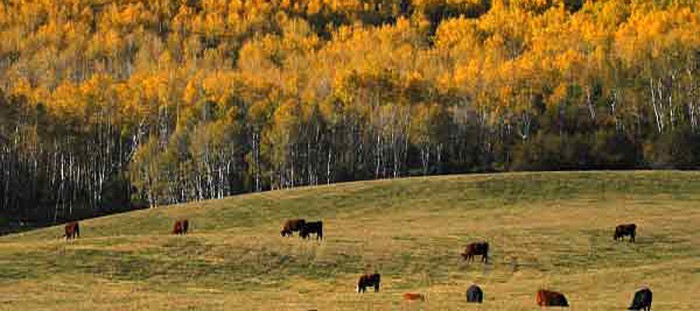This guest post comes from our friends over at Ranch Resources. Based in Montana, they are the premier independent ranch management company in Montana with a reputation for providing the broadest scope of knowledge and experience in resource management while fostering long term relationships with their clients.
Natural resource management that affects change in the landscape, and in a direction that ultimately meets the ranch owner’s goals is more an art than a science. This change can take place by intentional decisions, unintentional consequences, or simply doing nothing. One way or another, change will happen. Directing it in meaningful purposeful ways is the challenge.
Any ranch has a myriad assortment of management goals and objectives: agricultural revenue, wildlife abundance and diversity, noxious weed control, preserving special areas, healthy lifestyles, maintaining western culture, habitat improvement, and for some people, spiritual renewal. Oftentimes these goals provide conflicting management scenarios and directing results in purposeful directions can seem unachievable. For example, maximizing agricultural production does not achieve good wildlife diversity. Balancing these conflicting goals to meet the ranch owner’s desires and establishing and defining realistic expectations, can best be achieved through professional management.
A recent situation highlights this need for professional balance.
A beautiful 1200 acre property in Montana hosts an amazing diversity of habitats – chief among them are extensive aspen stands. Ensuring the aspen remain healthy was a primary concern for the owner. Historic grazing by cattle and increased pressure from elk and deer browsing had a significant effect on the aspen’s regeneration, so that the majority of aspen stands were old and in a declining condition. In addition to this goal, the owner also wanted livestock grazing on the ranch to generate revenue and to maintain the local agricultural culture of the area. Finally, the owner wanted to maintain the elk herd on his property to enjoy throughout the year.
Removing cattle entirely to promote regeneration would not meet the owner’s goals of generating revenue and maintaining that cultural aspect of the property. Additionally, removing grazing results in a decline in forage quality, which in turn results in elk leaving the ranch to find better forage. How then do you manage these apparent conflicting land and cultural objectives?
Through an understanding of the physiology of aspen, we know that protein levels in young shoots peak in the fall and winter months. It is during this time that browsing intensity increases. Historically, a small herd of cattle (around 50 head) grazed the ranch between October and February; the worst time of the year to be grazing cattle, in terms of aspen health.
To find a better balance for the land owner, Ranch Resources started negotiations with the grazing lessee and moved the grazing period to the late spring/early summer months. Instead of grazing 50 head, we are now grazing 200 head and for only 4-6 weeks. These changes provide an opportunity for all of the land owner’s goals to be met. Cattle are grazing the ranch, generating revenue and at a time and duration to have minimal impact on regenerating aspen. The cattle keep the grass resource healthy and productive, which encourages elk to spend more time on the ranch for the owner’s enjoyment.
This is a great example of how we generate and implement solutions for our clients. Understanding our clients goals, maintaining good relationships with lessees, the ability to identify natural resource issues, knowledge of the latest scientific concepts, and a willingness to find balance in management activities, all coalesce in our professional service to our clients. You will not find this ability or passion for solutions in any other management company in Montana.
Image courtesy of Ranch Resources

